The city of Kofu (甲府市), located in the northeast of Yamanashi Prefecture, is known for its deep nature and its many nearby mountains. A 1.5-hour express train ride from Shinjuku Station, Kofu is an ideal day trip (or more) away from Tokyo. However, despite its proximity to the capital, Kofu remains somewhat unknown to foreign tourists, making it an easy destination to venture off the beaten track.
Kofu is famous for its Shosenkyo valley and its breathtaking view of Mount Fuji. It will delight hiking and nature lovers. History buffs will also find happiness as this city is still linked to feudal Japan, seen today through the Shingen-ko festival or the gorgeous Maizuru castle. At last, the gourmets will appreciate the local agriculture, with its numerous vineyards and orchards, a good opportunity to taste delicious fresh fruits, or even to participate in their picking. Follow me in the heart of the mountains of Yamanashi prefecture!
- Best places to visit in Kofu
- Best things to do in Kofu
- Best local food to eat in Kofu
- Best places to stay in Kofu
Best Places to Visit in Kofu
There are many sightseeing options in Kofu city. Though I didn’t have enough time to visit as many places as I would have liked, here are my favorite spots I’d like to share with you below:
Walking in the Footsteps of the Tokugawa Samurai Clan at Kofu Maizuru Castle Park
Did you know that there is a castle in Kofu? Follow me and let’s return to the past!
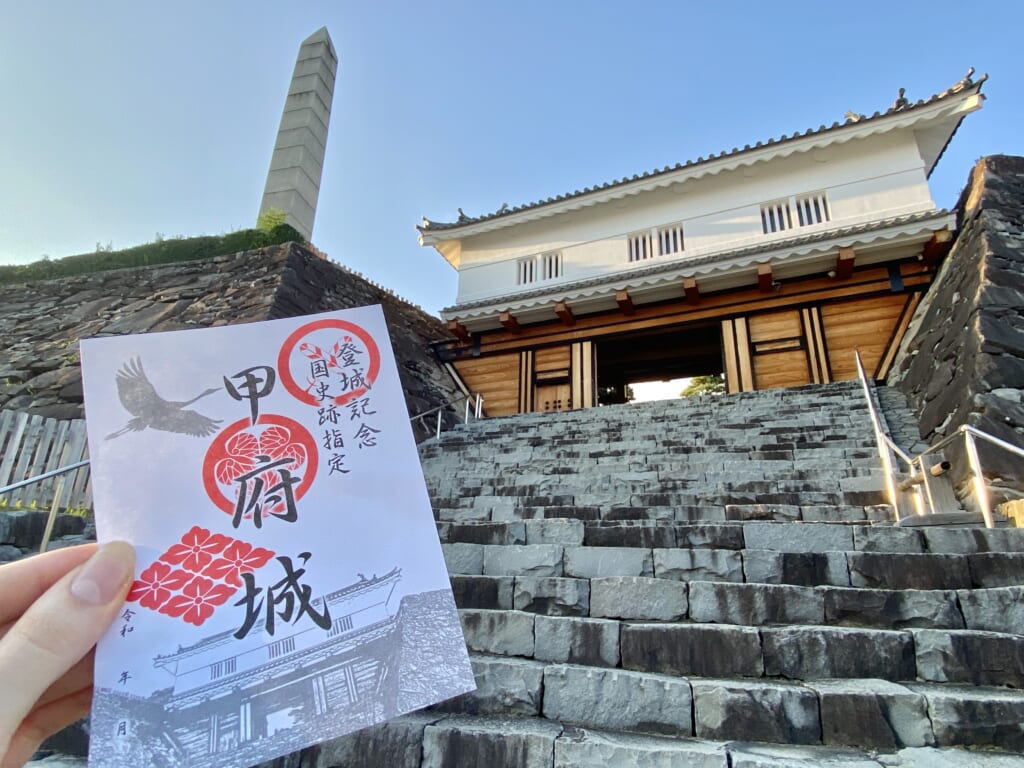
Let’s talk a bit about history to understand why this place is so important. Maizuru Castle was built by the Tokugawa clan by order of the famous daimyo Toyotomi Hideyoshi around 1583. At that time, it was the second-largest castle in the Kanto area after the capital. However, around 1877, it was partially destroyed by fire and remained abandoned for a while at the end of the shogunate. Rebuilt in the 20th century, it was moved to make room for the current Kofu station, built on the ruins of the old castle wall. The park of Maizuru Castle is now located right next to the station. Although the castle’s location has changed, the walls are still original, erected more than 400 years ago, and are considered a national treasure.

The particularity of this castle lies in its location: the site offers a beautiful view of the famous Mount Fuji, the city, and its surrounding mountains. It is a particularly photogenic place not to be missed during your visit. Of course, you have to be lucky and have a sunny day to enjoy the view fully, but the show is breathtaking when the sky is clear!


The park also contains the Yamanote-gomon gate on the north side of the castle and station, where there is a small exhibition hall with a viewing platform where you can see Mount Fuji and Yagura Tower. And guess what? Admission to the park is free, and the castle grounds are home to many cherry trees, which will make your visit unforgettable if you go during the cherry blossom season.
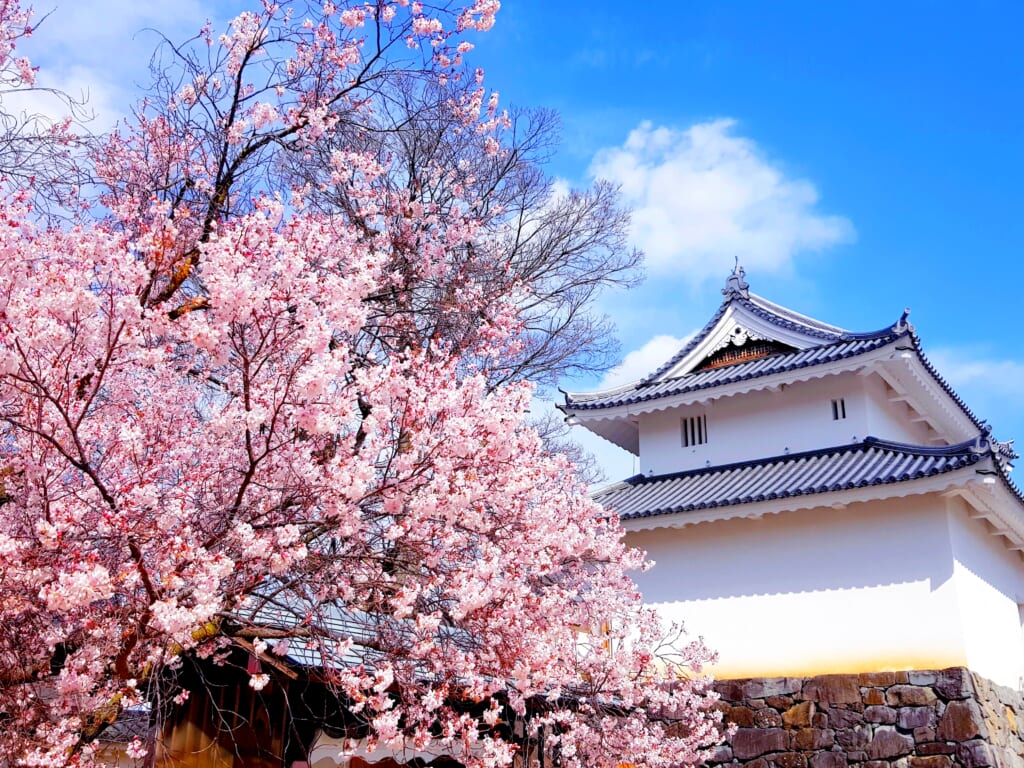
Takeda Shrine, Following in the Footsteps of the Great Takeda Shingen
Takeda Shrine is an important historical spot related to, you probably guessed because of his name: Takeda Shingen.

This Shinto shrine was built in 1919 in honor of Takeda Shingen, the protector samurai of the Kai region (now Yamanashi Prefecture) who is best known as one of the most valiant samurai of the Clan Wars era (1477-1573). He was the only one who was able to compete with Oda Nobunaga and Tokugawa Ieyasu in their efforts to conquer Japan, and many wonder what would have happened if he had not died suddenly, as the unification of Japan might have taken a completely different direction. The Takeda Shrine was specifically built on the remains of the fortified residence of the Takeda clan, which gives this place great historical significance. Inside the shrine, there is a real treasure room. There are many artifacts of the period (armor, fans, etc.), including the Yoshioka-Ichimonji sword designated a national treasure.
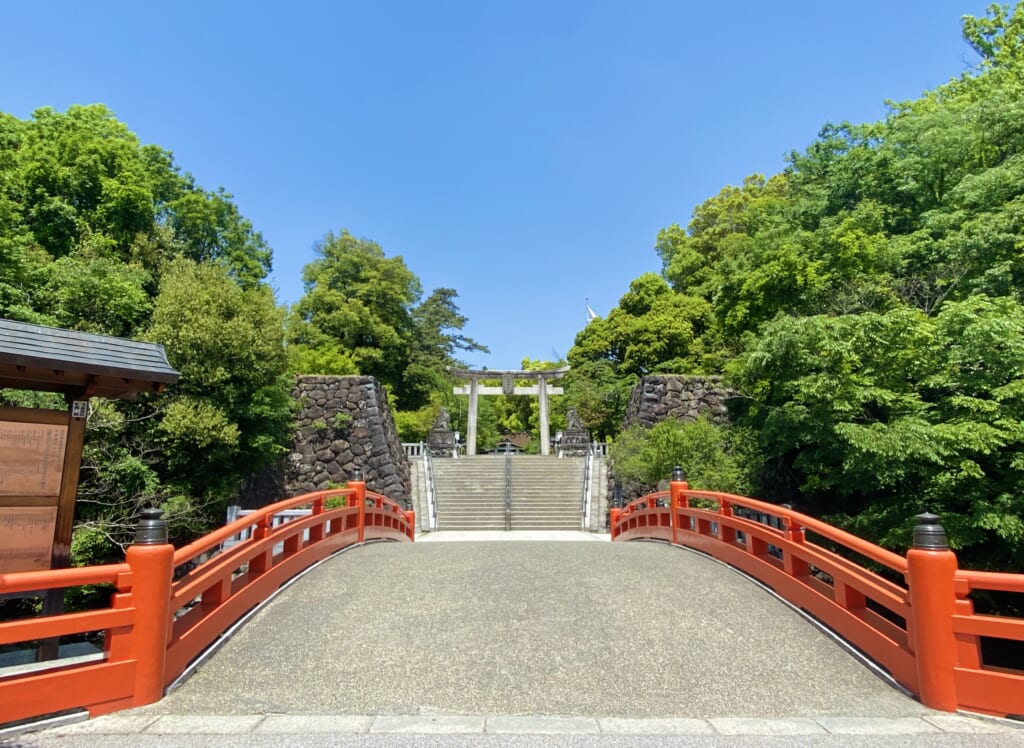
I’ll give you a heads up that, at first glance, this shrine may not be as spectacular as other shrines. If you are not particularly interested in the history of Japan, this may not be the place to visit.
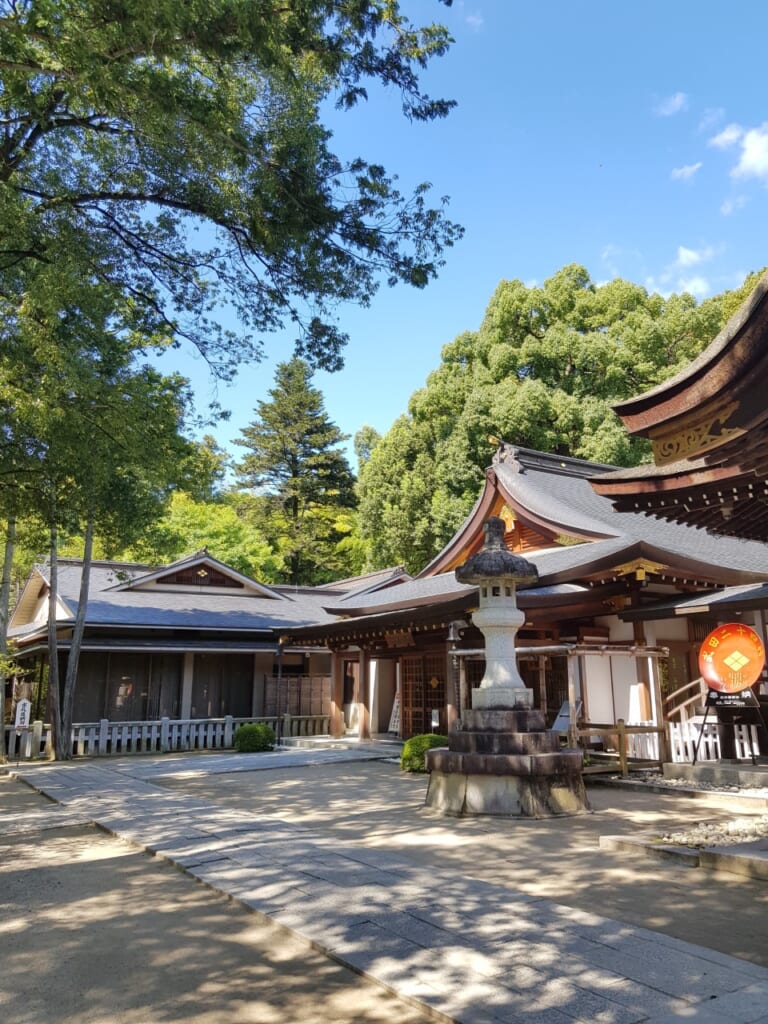
However, the more curious will find happiness in the museum opened recently in front of the shrine. There you can find more explanations about Takeda Shingen and the life he lived. The museum puts the history of the Takeda clan into perspective. I recommend that you start visiting the museum before the shrine. This way, you will understand better the context and will leave you with the impression of walking in the footsteps of the samurai.

The permanent exhibition is free, and the temporary exhibition costs only a few hundred yen. There is even a cafe and a souvenir store inside the museum, ideal for a short break.
In the end, even if a visit to the shrine is not necessarily a “must” visit, I’d say it’s worth the time to stop by the museum — especially during the springtime when the road leading to the shrine is strewn with cherry trees, making the visit very pleasant.

Not far from the shrine, you will find on your way several food stalls where you can enjoy delicious Shingen mochi with kinako (glutinous rice cake with roasted soybean powder) or cool down with mochi ice cream in the summertime.

Best Things to Do in Kofu
If you are tired of sightseeing and would like to take the time to enjoy some activities, here is a list of my favorite activities to do in Kofu!
Hiking in the Shosenkyo Valley, One of the Most Beautiful Natural Parks in Japan
If you are not a big fan of hiking (like me) you might want to skip this spot, but this part was actually the highlight of my whole trip, and it was definitely worth it.

Officially listed as a national heritage site in June 2020, Shosenkyo Valley is a real hidden treasure and very popular for Japanese hikers. Here, you will virtually be in the heart of the mountains and forest, in a world close to the magical forest of Mononoke Princess. Not as famous to foreign tourists, Shosenkyo Valley is a real peaceful haven, especially during its famous red and orange autumn leaves. We had the chance to visit the valley in the fall, and it was such a great experience!

There are three bus stops to get to the Shosenkyo Valley: “Shosenkyo-guchi” at the beginning of the gorge, “Greenline Shosenkyo” where the most picturesque part of the gorge begins, and finally “Shosenkyo taki ue” near the falls. Although it was tempting to take the bus to the end of the route, we motivated ourselves and chose the hiking path because it is the best way to discover the valley. Especially since the climb only takes about two hours (for about 4 kilometers).

We started our journey at Nagatoro bridge. On the road, we met all kinds of rocks in the shape of animals (bear, monkey, etc.) which we found very humorous before quickly finding ourselves on the Ai no Hashi, also known as the Bridge of Love. Legend says that if you cross this bridge with the person you love, you will spend a long and happy life with this person. Personally, I’m a romantic who likes these kinds of legends, so my husband and I had lots of fun crossing this bridge.

We also enjoyed the Yakumo shrine at the top of the cable car, which is also known to bring luck in love. Many people come here to pray for their happiness in marriage. An anecdote that will perhaps make beautiful stories to tell when you will come back home!
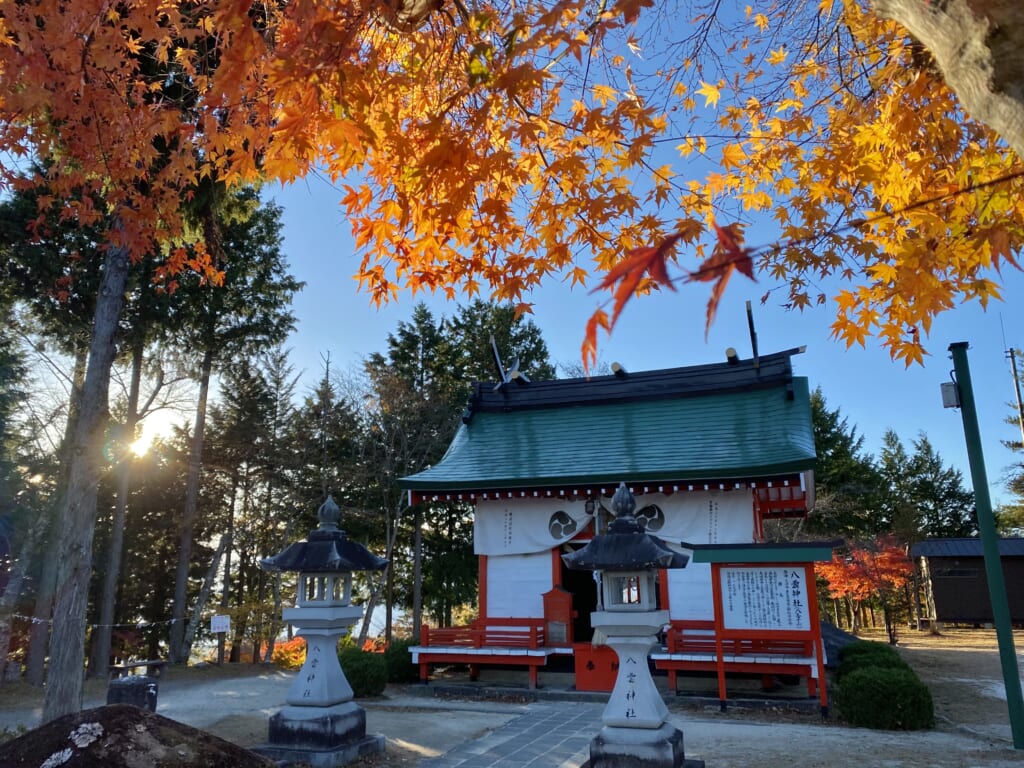
After walking a few minutes, we arrived at the Sengataki waterfall. It is about 30 meters high, and it is one of the most famous sites of the hike in the Shosenkyo valley. Lost in the heart of the forest, we let ourselves be lulled by the sound of the water. We even had the chance to see a rainbow appear over the water. Such a magical atmosphere! There is a staircase leading to a small shopping alley not far from the waterfall, an ideal place to buy souvenirs or to take a break for a snack or meal.

After a few more minutes of climbing, we took the cable car to reach the observation platform of Mount Rakanji, more than 1000 meters high. The round trip costs 1300 yens, and the journey takes about 5 minutes.

From the observatory, the view of Mount Fuji and the surrounding mountains is stunning. I was motivated during the hike by telling myself that with some more effort and a little bit of luck, I would see Mount Fuji. After the effort, the view was the most beautiful reward, made even more so until I reached Yasaburo-dake peak. On a rocky platform, we feel like we were on top of the world with a 360° panoramic view of the surrounding mountains, including Mount Fuji.

I must confess that I am usually not a big fan of hiking. But believe me when I tell you that Shosenkyo Valley is a must if you pass by Kofu. The various hiking trails are easily accessible (with good hiking shoes, of course), and the scenery is truly amazing. The day passes without you even noticing it. There are a few rest areas, restaurants, and souvenir stores along the way, where you can take a break at a reasonable price. If you come to Kofu, give it a try!
Discover Local Agriculture and Fresh Fruit Picking in Yamanashi
Would you like to put on a straw hat, enjoy the sun and put yourself in a farmer’s shoes to collect some delicious fruits? You are in the right place!

Yamanashi Prefecture is famous for the variety and quality of its fruits. Located in a topographic basin, the region has a special sunny climate. Did you know that Kofu has one of the longest daily sunshine hours in Japan? This is very conducive to the local production of wine and orchards. Blueberries, strawberries, peaches, cherries, plums, pears, grapes, and more, there is so much choice! One of our writers, Todd, even discovered the peach blossoms in Yamanashi prefecture.
We decided to get some peaches during our visit and participate in picking them to learn more about the local agriculture. We headed to Misaka Farm Grape House in Fuefuki town (known as the “peach city” of the region). Accessible in only 35 minutes by direct bus from Kofu station to Natsume stop, Misaka Farm Grape House is primarily specialized in grape production but is also widely known for its peach picking open to the public. There is no need to book in advance (except for groups of more than 10 people), and the staff can even accommodate you on rainy days.

First, the staff will ask you to choose a course, from 900 to 3500 yens per adult. The most common one is the 1300 yen fee, which allows you to pick two peaches and take them home. This fee also gives you access to the all-you-can-eat peach buffet available on-site, where you can enjoy peaches as much as you want. The higher rates also include a meal, with some souvenirs to take home.

After choosing your course, the staff will explain how to choose and pick your peaches. They ripen on the tree and fill up with sugar when in contact with the sun, so it is better to pick on high branches using the ladders and steps provided on the site. It is also preferable to pick peaches that are well-scented, round, and symmetrical, with reddish skin. However, it is important to avoid touching several peaches to gauge their “quality,” at the risk of damaging them over time. So the picking is done according to your eyes and the peaches’ smell.

The fruits are of such high quality that you can even eat the skin! The fruit in close contact with the skin is the sweetest, which you can enjoy after the peach is washed with the appropriate tubs and cut up as it is. This experience is enjoyable and allows you to spend a good time outdoors and enjoy nature while feasting on delicious fresh fruit. We recommend you avoid coming around noon, when it’s jam-packed, and come earlier in the morning if you want to take your time picking the best peaches.

The Shingen-ko Festival: The Largest Samurai Parade in the World
Every year in Kofu, it is actually possible to return to the past and assist in one of the biggest samurai battles that happened a few hundred years ago.

Every year in early April, an event of a colossal scale is held in Kofu city. The Shingen-ko Festival, officially recognized in the Guinness World Records as the largest samurai parade in the world, honors the previously mentioned Takeda Shigen. Kofu is one of the few cities in Japan to celebrate such an event in honor of its former lord. This shows the respect that the locals still have for him today! Unfortunately, due to the Covid-19 pandemic, the festival was canceled in 2020, but it successfully happened in April 2021 for its 500th-anniversary celebration of Takeda Shigen.

More than 1000 participants dressed in samurai costumes embodying the Takeda clan who parade in the city to pay tribute to their former lord for this special occasion. The parade starts from Kofu station and goes through the clan’s old estate before arriving at Maizuru Castle Park.

The event normally lasts three days and consists of several parts, including a reenactment of the battle of Kawanakajima at the Takeda Shrine. The scene is amusing because it is extremely theatrical. For many Japanese, it’s not a game, and it is a significant act to honor the memory of their former ruler.

Each year, the festival attracts more than 100,000 Japanese and international visitors and is a real pride for Kofu city. Foreigners are welcome to participate in the parade if they apply in advance and pay a registration fee. Would you like to be a samurai during a festival?
Best Local Food to Eat in Kofu
Would you like to try Kofu’s local cuisine? If you would like to try something a bit different, this is the right place to be!

If you are not a fruit person, you should know that Kofu’s local specialty is actually hôtô (ほうとう), a dish of thick noodles in miso (fermented soybean paste) broth accompanied by seasonal vegetables. The broth also has several variations, with or without meat.

The texture of the noodles is very similar to udon but flatter. As for the broth, it is quite salty, and the texture is delightful. It’s enough to fill you up after a hike in the Shosenkyo valley! This dish is an ideal way to warm you up and is especially nice to share with friends. It is even said that hôtô was the dish eaten by Takeda Shingen and his soldiers before a battle. This dish is not very expensive (about 1000 yens) and is worth it.

Another interesting local dish to try is torimotsuni (鳥もつ煮), chicken giblets fried in soy sauce, which won the B-1 Grand Prix (an award for the best local dishes in Japan) a few years ago. The texture is unique and goes very well with soy sauce. I recommend going to Kiri (きり), in the north area of Kofu station, which is a very good place to sample torimotsuni with soba noodles.
If you are curious, give it a try!

Best Places to Stay in Kofu
I would like to recommend Shiro no Hotel (城のホテル). This brand new hotel has a convenient location between the train station and Kofu Castle. Prices are relatively affordable, and even if the hotel itself is a bit classic, it offers a very nice view from the top floor, overlooking the whole city. A great spot to see the sumptuous Mount Fuji! There is also an onsen where you can take a dip, ideal for relaxing after a day of sightseeing.

If you want something a bit more authentic, there are many ryokans in Yumura Onsenkyo spa area. This thermal district was often visited by the writer Dazai Osamu, and it is said that it is here that Takeda Shingen came to treat his wounds. The area is composed of about ten onsens and you can buy a pass which grants you access to try different onsen of the area. There are several pass options to consider depending on your budget.



Practical Information
- Official Tourism Website of Kofu City
- Official Tourism Website of Yamanashi Prefecture
- Official Tourism Website of Shosenkyo Tourism Association
- Facebook Page of Kofu City
- Instagram Page of Kofu City
- Misaka Farm Grape House website (in Japanese only)
How to Get to Kofu City
From Kanto
- From Shinjuku: 1.5 hours by LTD express train (Azusa or Kaiji), or 2 hours and 10 minutes by bus.
- From Haneda Airport: 3 hours and 10 minutes by bus.
- From Narita airport: 3 hours and 45 minutes by bus.
From Kansai
- From Shin-Osaka station: about 4 hours. Take the Shinkansen to Shizuoka, then the LTD Fujikawa express train to Kofu.
How to Get to Shosenkyo Valley
- From Kofu Station: 30 minutes by bus. Get off at “Shosenkyo-guchi”, “Greenline Shosenkyo” or “Shosenkyo taki ue” depending on the distance you want to hike (note that in high season from April 1 to November 30, the last bus to Kofu from Shosenkyo taki ue is at 5:32 pm).
How to Get to Misaka Farm Grape House
- From Kofu Station: 35 minutes by bus. Get off at Natsume bus stop.
Kofu and Yamanashi Prefecture are full of beautiful landscapes, wrapped in an abundance of nature, a destination I highly recommend. Whether you are a hiker or not, the Shosenkyo Valley is worth a visit, with its breathtaking views of Mount Fuji. Visitors will enjoy Kofu City all year round, though the springtime will have wonderful cherry blossoms and the Shingen-ko festival, and autumn to enjoy the autumn leaves in Shosenkyo Valley.
Thanks to Fanny Orange and the Kofu City Hall for their collaboration on this article. For more information about Kofu and its surroundings, do not hesitate to visit the Facebook and Instagram pages of the city.


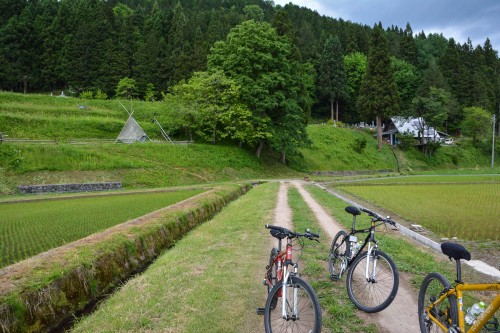











No Comments yet!